How to Split Firewood 2024
- September 18, 2023
- 3 comment
In an era dominated by electronic comforts and instant gratifications, there’s something profoundly satisfying about returning to the basics. Splitting firewood, an age-old practice connects us not only with nature but also with generations past. It’s not just about creating a pile of logs for your fireplace or campfire; it’s about embracing self-sufficiency, understanding the nuances of wood, and mastering a timeless skill. Whether you’re a seasoned woodsman or a curious novice, this article will guide you through the art and technique of splitting firewood effectively and safely. So, grab your axe, roll up your sleeves, and let’s dive into the world of timber and kindling!
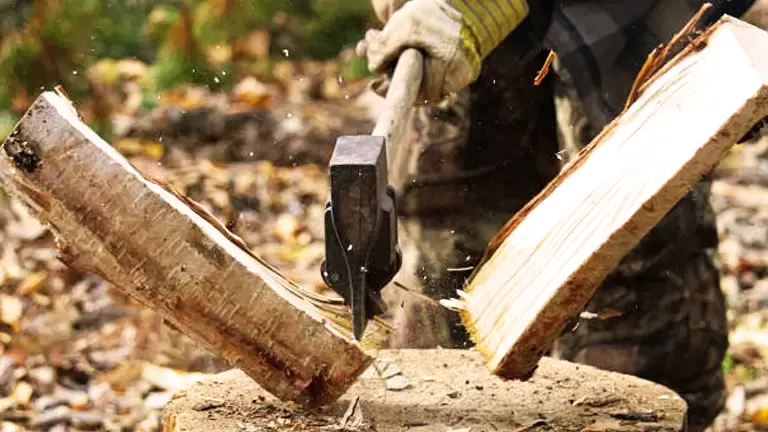
Understand the Importance of Splitting Firewood
Delving into the world of firewood, it’s crucial to first recognize the paramount importance of splitting it. Why, you ask? Here are the reasons:
- Efficiency at its Finest: Think of split wood as the MVP of firewood. Unlike its whole log counterparts, split wood has an accelerated drying process. This means when it’s time to ignite, it doesn’t just burn – it blazes with efficiency, giving you a hotter, longer-lasting fire with less fuss.
- Safety First, Always: Now, imagine the inside of your chimney. Creosote, a tar-like byproduct of wood combustion, loves to accumulate there. Burning wet or whole logs? You’re inviting more creosote. However, dry wood, especially the kind you get from split logs, drastically diminishes this buildup. Less creosote means a lower risk of those perilous chimney fires that can turn a cozy evening into a disaster.
- Economic Wisdom: In an age of skyrocketing costs, who doesn’t love savings? By investing some sweat equity and splitting your own firewood, you’re not only ensuring premium quality logs but also significant savings. In the grand scheme, buying pre-split wood can lighten your wallet more than you’d expect. By becoming your own lumberjack, you’re crafting warmth for your home and fattening your savings at the same time.
Choose the Right Wood
Venturing into the world of woodcraft requires a discerning eye. Just as a chef selects the finest ingredients for a dish, you too must choose the right wood to ensure a warm, efficient, and safe fire.
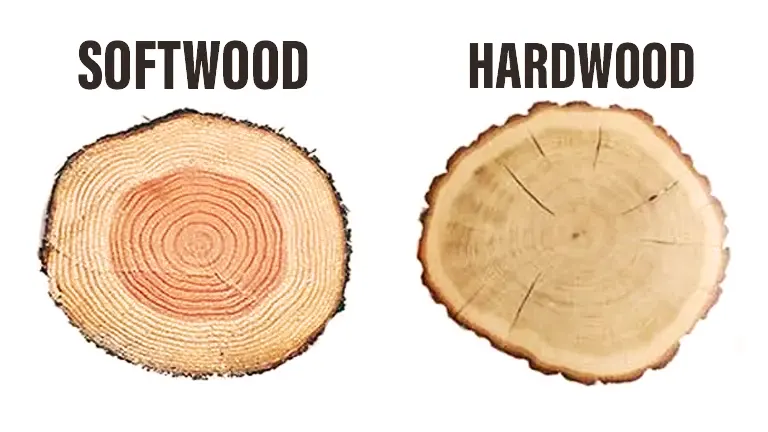
- The Hardwood Heroes: Enter the titans like oak, hickory, and maple. These hardwoods are the marathon runners of the burning world. Their dense nature means they burn hotter and longer, producing a generous heat output. An added bonus? Their combustion is cleaner, resulting in less creosote deposition in your chimney. But, as with all heroes, they have their challenges: their dense structure makes them more resistant to splitting, demanding a bit more muscle and patience.
- The Softwood Sprinters: On the flip side, we have the sprinters of the wood world, like pine and fir. These softwoods get their name from their less dense structure, which means they’re more willing participants when it comes to splitting. Their lightweight nature allows them to ignite quickly, making them great for kindling or a quick fire. However, this also means they burn out faster. Moreover, their faster combustion often results in a higher creosote output, which requires more frequent chimney cleaning.
Gear Up
When preparing to split firewood, the tools you choose become an extension of you. However, it’s not just about having the right tools—it’s about ensuring that you’re well-protected during the process.
1. Maul and Axe
These are not just wood-cutting instruments; they’re legends in their own right. To the uninformed, they might seem like siblings but delve a bit deeper, and their unique characteristics shine:
- The Splitting Maul: Think of the splitting maul as the powerful elder sibling, forged for a specific purpose. Its kinship with the sledgehammer isn’t just a passing resemblance. It’s robust, it’s relentless, and it’s designed with a singular intent – to split wood. The increased weight and the broader head aren’t mere design quirks; they’re intentional features that provide the maul with momentum, allowing it to drive through logs with an almost brutish force. For those seasoned in the art of wood splitting, the maul isn’t just a tool; it’s their trusted companion.
- The Traditional Axe: If the maul is power, the axe is precision. Lighter in weight, the traditional axe offers a finesse that its heavier counterpart might not. It’s versatile, nimble, and can be wielded with a grace that belies its deadly efficiency. However, this agility comes with a trade-off. When faced with larger, more stubborn logs, the axe might demand a bit more elbow grease than the maul.
My Top Picks :
Known for its durable build and efficient design, this axe is a favorite among many for splitting medium to large-sized logs.
A premium choice, this maul is renowned for its craftsmanship and durability. Its weight and design make splitting logs a breeze.
2. Guard Those Peepers with Safety Glasses
Our eyes, marvels of biology though they are, remain one of our most delicate organs. They’re not designed to withstand the onslaught of high-speed wood chips. Enter the unsung hero of the wood-splitting arena: safety glasses.
These glasses are not just pieces of plastic; they’re meticulously designed shields. They stand guard, ensuring that regardless of how erratically wood fragments behave, your eyes remain untouched and safe. The clear lens provides an unobstructed view, ensuring you’re always in control, while the robust material acts as a barrier against any would-be intruders.
In the grand scheme of wood splitting, where every swing counts, and every log split is a step closer to a warming fire or a well-stocked woodpile, safety glasses ensure continuity. They ensure that the romance of the task isn’t broken by a sudden, painful intrusion. And most importantly, they guarantee that the only memories you carry from the session are those of accomplishment and not a painful dash to the emergency room.
So, the next time you’re gearing up, remember: while the axe or maul may be the star players, safety glasses are the diligent goalkeepers. And in the game of wood splitting, you definitely want them on your team.
My Top Picks :

A trusted brand in the construction world, these glasses offer robust protection with a modern design.
3. Gloves – Your Hand’s Best Friend
Ah, the splinter: nature’s tiny but mighty reminder of its presence. As minute as they are, these slender fragments of wood have a knack for making their presence felt, often at the most inconvenient times. Whether you’re gathering firewood or shaping timber for a project, splinters are the bane of any wood handler’s existence. Their sting might be small, but the irritation they leave behind can last for days.
But wood isn’t just about the splinters; it’s a raw, organic material, filled with unpredictabilities. From rough patches that can scrape the skin to hidden pockets of resin that can make the wood slippery, handling timber barehanded can be a bit of a wild ride.
Enter the humble work glove.
At first glance, they might seem like simple protective wear, but delve deeper, and their importance becomes clear. A good pair of gloves acts as a second skin. Their rugged exterior provides a formidable barrier against those pesky splinters, ensuring your hands remain smooth and pain-free. No more unexpected jabs or time spent with tweezers trying to fish out an embedded piece of wood.
But protection is just one facet of their utility. Gloves are also the unsung heroes of grip and efficiency. The textured surfaces, be it leather, rubber, or any other durable material, ensure that whatever you hold — be it an axe, maul, or a piece of timber — remains firmly in your grasp. This enhanced grip reduces the chances of tools slipping, logs tumbling, or any other accidents that can occur from a momentary loss of control.
In the grand symphony of wood splitting, where every piece of equipment plays its part, gloves might not be the flashiest instrument. But they’re the steady rhythm, the consistent beat that keeps everything in sync. They make sure that at the end of a hard day’s work, your hands remain as eager and ready as they were at the start, free from the painful reminders of nature’s tiny barbs.
My Top Picks :

Known for their dexterity and durability, they’re a favorite among many DIY enthusiasts and professionals alike.
4. Step Right with Sturdy Shoes
In the world of wood splitting, while our focus often turns to the tools in our hands or the logs awaiting their split, it’s the ground beneath that holds a myriad of potential hazards. Strewn with wood shards, tools, and shifting logs, this terrain is ever-changing and unpredictable. Amidst the action, one constant remains: the relentless contact of our feet with this challenging landscape. This is where the armor of a durable, preferably steel-toed, shoe becomes indispensable. Such footwear not only shields against the sudden weight of a misjudged log or the threatening edge of a tool but also disperses impact, keeping our feet safe from potential harm.
But these shoes offer more than mere protection. Their design, often overlooked, provides traction on a littered forest floor, ensuring stability with each step and swing. This grip, subtle yet significant, can be the very barrier between a productive wood-splitting session and an unfortunate mishap. In essence, while axes and mauls might take center stage in this age-old dance, it’s the steadfast support of durable shoes that ensures the performance goes off without a hitch.
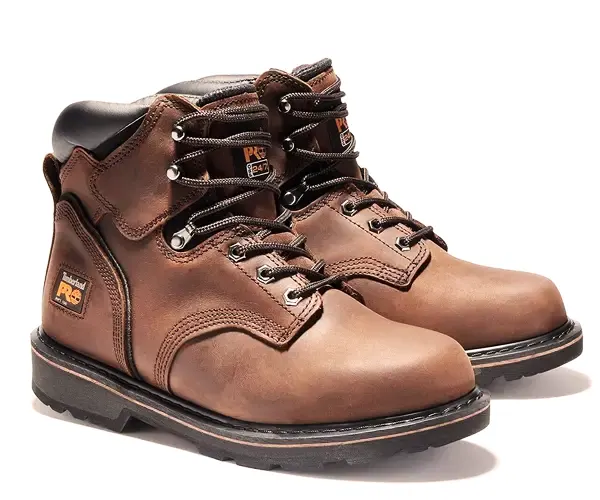
These boots are both rugged and comfortable, providing excellent protection with their steel-toe design.
Prepare Your Workspace
Embarking on the task of splitting wood demands not just the right tools but also an optimal environment. The importance of a well-prepared workspace cannot be overstated; it’s akin to laying down the foundation before building a house.

The Role of a Chopping Block
Think of the chopping block as your workbench in the world of wood splitting. By elevating the wood off the ground, the block offers two primary advantages:
- Ergonomics: Working at a raised level reduces the strain on your back, ensuring you can split wood with better posture and less fatigue.
- Stability: A good chopping block, whether it’s a sizable section of a log or a repurposed tree stump, provides a firm and stable surface. This ensures that the wood doesn’t shift unexpectedly, which could lead to inefficient cuts or even accidents.
Crafting a Clear Canvas
Imagine trying to swing a maul with obstacles around; it’s neither safe nor efficient. Preparing the area around your chopping block is a crucial step:
- Eliminate Trip Hazards: Before you start, do a sweep of the area to remove any objects, like stray branches or tools, that could be in your way. Tripping while holding a sharp tool is a recipe for injury.
- Space to Swing: The act of splitting wood requires a full, unobstructed swing for maximum efficiency and safety. Ensure you have a generous radius of clear space around you. This not only allows for a clean swing of the maul but also ensures that if a piece of wood flies off unexpectedly, it doesn’t collide with any nearby objects or people.
The Splitting Technique
Observing the Log
Before making any physical effort, the first and foremost step is to carefully assess the wood. Logs often have inherent weaknesses in their structure, visible as cracks or lines called “checks.” By identifying and targeting these checks, the splitting process can be made significantly more efficient. These natural lines of weakness in the log reduce the energy and effort required, making the endeavor both quicker and less strenuous.
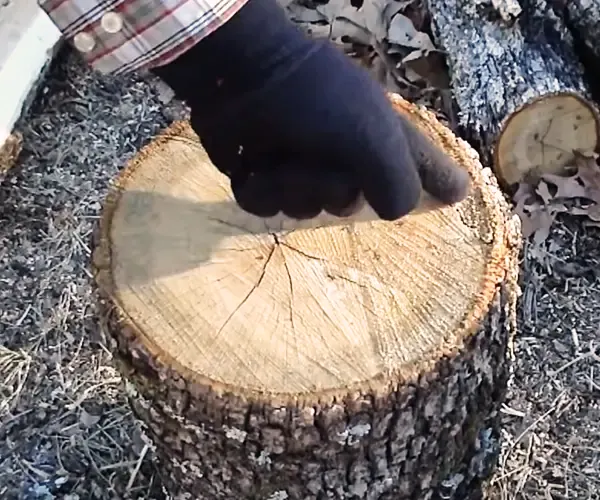
Positioning for the Swing
The foundation of an effective wood-splitting technique lies in proper positioning. Adopting a stance with feet shoulder-width apart ensures stability, balance, and a firm base from which to swing. Additionally, the placement of the log in relation to the person splitting is paramount. If positioned too far, there’s a risk of leaning and losing balance, and if too close, it may impede a full, powerful swing. The log should ideally be placed at a distance where one can swing comfortably and powerfully without any obstruction.
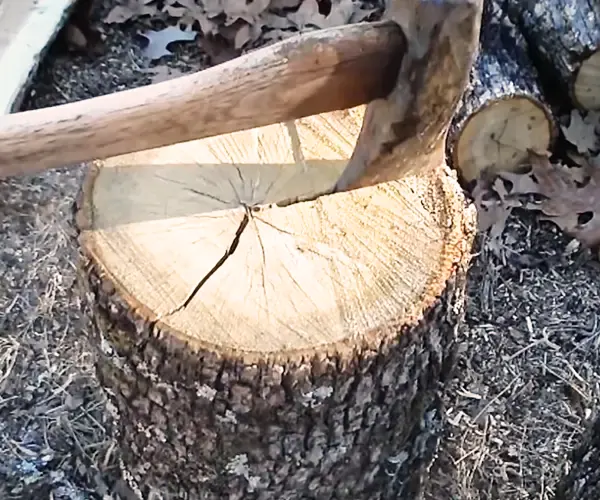
Mastering the Swing Technique
Equally important is the mastery of the actual swing technique. When using a maul, a tool designed specifically for splitting, it’s crucial to utilize a two-handed grip. One hand should start at the base of the handle, and the other near the head of the maul. As the swing commences, the hand near the head should slide down to meet the hand at the base, a movement that generates additional momentum and force. Interestingly, the optimal striking point isn’t always the center of the log. Targeting the edge, especially close to a check, often results in a more successful split. Moreover, it’s essential to capitalize on the maul’s inherent weight. Instead of purely relying on muscle power, allowing the weight of the maul to do most of the work can result in a more effective split, reduced fatigue, and prolonged wood-splitting sessions.

Tips and Tricks
Size Matters
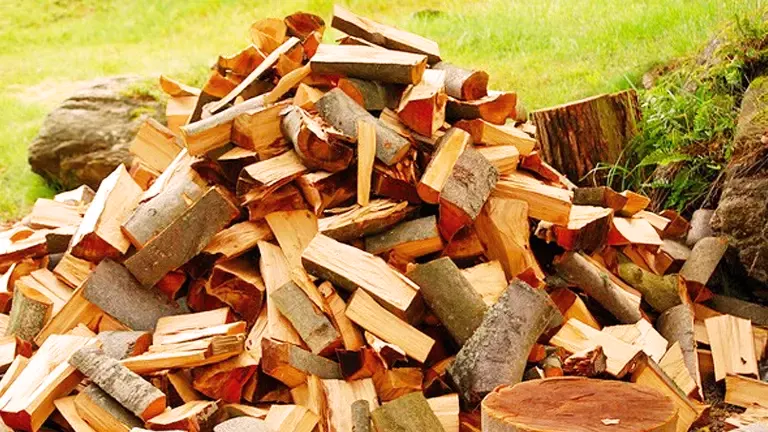
When splitting wood, especially for home use, the size of the split logs plays a pivotal role in ensuring efficient burning and storage. Logs with a diameter of about 3-6 inches are ideal. They fit well in most wood-burning stoves, fireplaces, and storage spaces. Plus, logs of this size tend to dry faster and more uniformly, ensuring better combustion when burned.
Mind the Grain
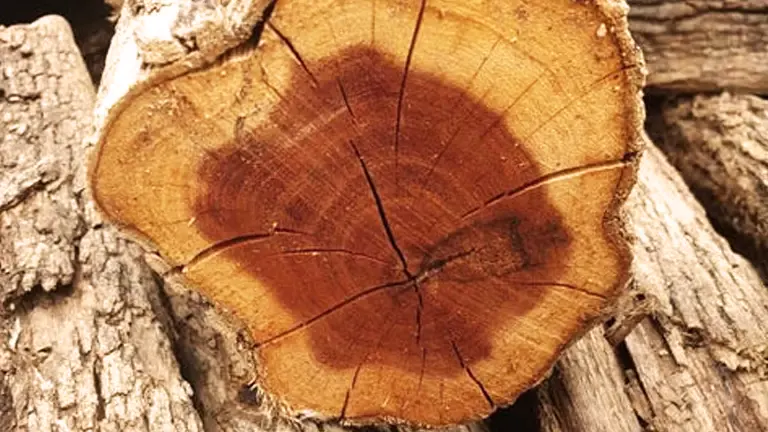
The grain of the wood acts as a natural roadmap for splitting. Always aim to split along the grain to make the process smoother and more efficient. However, be wary of knots, those round, often darker portions of wood where branches were once connected. Knots are denser and irregular, making them challenging areas to split through. Whenever possible, adjust your splitting approach to avoid these tricky sections, or be prepared for a bit more effort if they’re unavoidable.
Stay Persistent
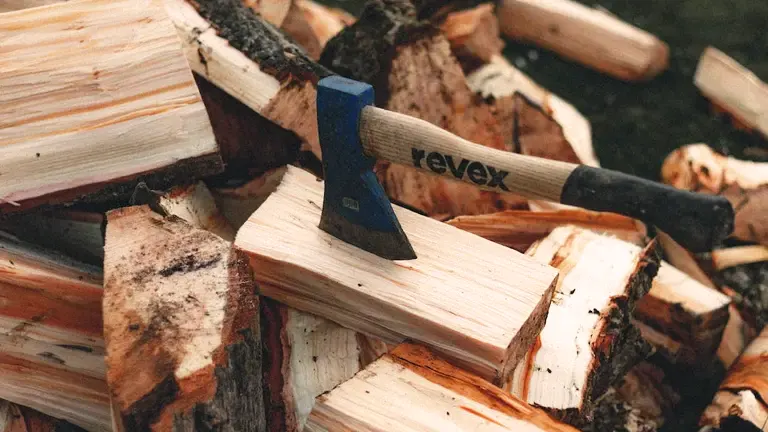
Not every log will yield easily to your efforts. Sometimes, even with the best technique and a sharp maul, a log might resist splitting on the first strike. Instead of feeling disheartened, reposition the log and reassess your angle of approach. Changing the angle or targeting a different section of the log can often make all the difference. Persistence, combined with a bit of strategy, will see you through the toughest of logs.
Storing the Firewood
After the physical labor of splitting wood, the next critical step is storing it properly to ensure it burns efficiently and safely. Here’s a more detailed look at the process:

- Location Selection: Choosing the right location to stack your firewood is crucial. The chosen spot should ideally be open to sunlight and wind, as both of these elements play a significant role in drying the wood. A well-exposed area accelerates the seasoning process, ensuring the moisture within the wood evaporates more quickly.
- Elevating the Base: Direct contact with the ground can expose the firewood to moisture and pests, both of which can lead to decay and rot. By elevating the base of your firewood stack, you provide an added layer of protection. This can be achieved using wooden pallets, concrete blocks, or even pressure-treated lumber. Raising the wood not only prevents it from absorbing ground moisture but also discourages pests like termites or ants from infesting your stack.
- Ensuring Proper Air Circulation: Air circulation is vital for the drying process. When stacking, make sure the logs are placed close together but not so tight that air can’t flow between them. Some individuals even adopt the “holz hausen” method—a circular wood stacking technique—that is believed to optimize air circulation and drying. Whether you choose a traditional rectangular stack or this circular method, the key is to ensure that air can move freely through the wood.
- Seasoning the Wood: “Seasoning” is the term used for the drying process that firewood undergoes. Freshly split wood contains a high amount of moisture, which, when burned, produces excess smoke and creosote—a tar-like substance that can accumulate and create dangerous chimney fires. By letting the wood season for at least six months (though a full year is often even better), you allow most of this moisture to evaporate. Seasoned wood burns hotter, is cleaner and is much safer for indoor fireplaces and stoves.
Conclusion
Splitting firewood might seem like a daunting task at first, but with practice, it becomes a rhythmic and meditative process. It’s a blend of technique, strength, and intuition. So, the next time you’re sitting by a warm fire, take a moment to appreciate the art and effort that went into preparing those perfect logs. Embrace the inner lumberjack in you!
FAQs
- Why do some logs make a “singing” sound when split?
This phenomenon can occur due to the release of built-up tension within the log. As wood grows, it can develop internal stresses. When split, these tensions release suddenly, creating a musical or ringing note. - Are there certain times of the year best suited for splitting wood?
Yes, late winter to early spring is an ideal time. The sap content in trees tends to be lower, making the wood less sticky and easier to split. Moreover, splitting in this period gives wood ample time to dry before the next burning season. - I’ve heard of “riving” in relation to wood. What does it mean?
Riving is an ancient technique of splitting wood along its grain using a tool called a froe. It’s often used in green woodworking to make chair parts, shingles, and other wooden items, allowing the natural grain of the wood to dictate the split. - Can the color of a log’s interior give clues about its quality for burning?
Generally, darker heartwood indicates older, denser wood, which might burn longer and hotter. However, the moisture content and species of the wood are more crucial factors in determining its burning quality. - What’s the deal with “flatsawn” and “quartersawn” when it comes to firewood?
These terms are borrowed from lumber milling. Flatsawn (or plainsawn) wood is cut parallel to the grain, whereas quartersawn is cut perpendicular. While these cuts primarily affect the appearance and stability of lumber, in firewood, quartersawn pieces might split a bit easier due to their alignment with the grain. - How does moon phase folklore relate to wood splitting?
Some old beliefs hold that wood cut and split during the waning moon (when the moon is decreasing in size) is less likely to rot or become infested with pests. Though there’s no scientific evidence supporting this, it’s an interesting piece of wood lore. - Why do some logs “pop” loudly when burning?
This is due to the moisture trapped in the wood. When heated, the water inside turns to steam, building pressure. When the pressure exceeds the strength of the wood containing it, a pop or crack results as the steam escapes. - Is it true that wood can be too dry for optimal burning?
Absolutely! Overly dry wood can burn too quickly, producing less heat and making it less efficient as a fuel. Ideally, firewood should have a moisture content between 15% to 20% for optimal burning.
We’d love to hear from you! Share your personal experiences and insights on splitting firewood in 2024 in the comments section below. Your tips and stories could be invaluable to fellow wood enthusiasts and beginners looking to refine their techniques!

David Murray
Forestry AuthorI'm David Murry, a forestry equipment specialist with a focus on chainsaw operation. With over 13 years of experience, I've honed my skills in operating and maintaining a wide range of machinery, from chainsaws to log splitters. My passion for the outdoors and commitment to sustainable forestry drive my work, which emphasizes safety, efficiency, and staying updated with industry advancements. Additionally, I'm dedicated to sharing my expertise and promoting environmental awareness within the forestry community.
3 comments
Putting the round of wood inside an old tyre on your choping block stops it falling off the block as you split it.
Grant Christian
September 22, 2023 1:34 amNice post We were just talking about "He who cuts (or splits) his own wood warms himself twice, and the poem "Logs to burn, save the coal a turn..." which if you don't know it is worth a read. It deals with all the species' merits as firewood.

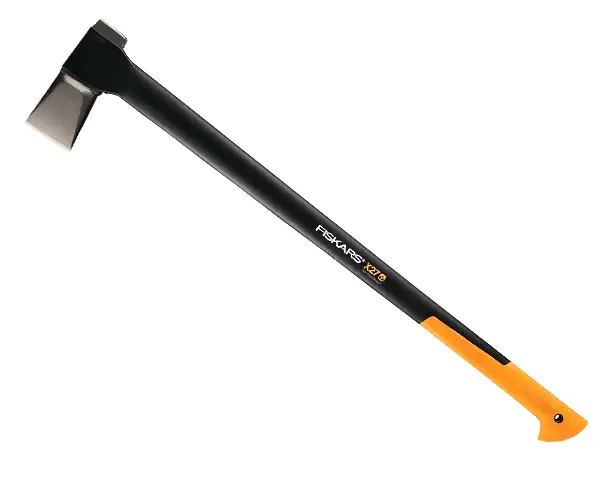
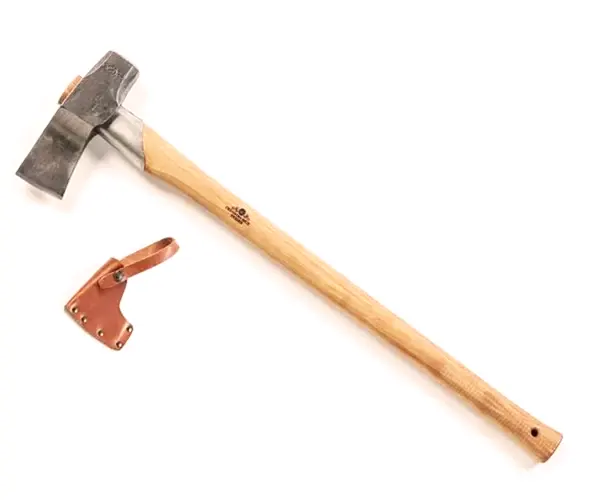


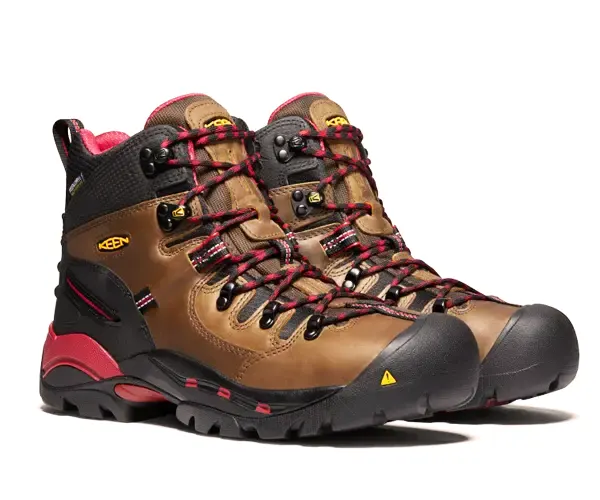








I heat my house with wood and I've been doing that for more than 10 years so I'm well-aquainted with the many techniques you describe. Good article. And as an ER doc I see the results of those who do not follow your safety rules. Two other safety suggestions come to mind. First, when positioning your wood on a chopping block it should be towards the far side so that the maul hits the block if it misses the wood or the wood splits too easily. Second, the handle of the maul should end up in a horizontal position either in the wood or the block. This reduces the chance of swing-through which may result in shin trauma even if your feet are placed apart. Again, a good article. Keep up the good work.
Murray Archdekin
September 26, 2023 7:00 pm